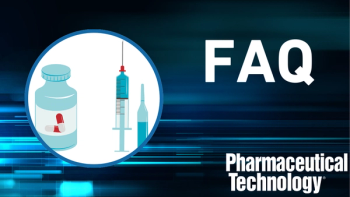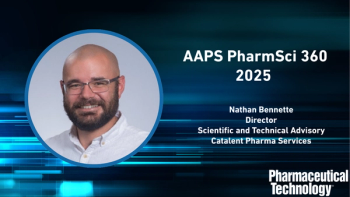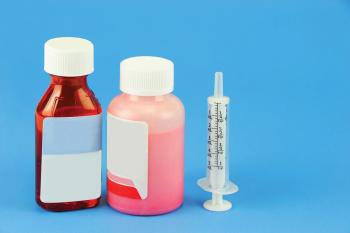
- Pharmaceutical Technology-06-02-2020
- Volume 44
- Issue 6
Better Connected: The Value of Connected Drug Delivery
Connected delivery solutions can provide value to industry and patients, through improved medication adherence and outcome optimization.
As the world becomes more heavily reliant on connected devices, it is little wonder that the connected drug delivery devices market is set to witness significant growth in the coming years. According to market research, the sector is expected to grow at a compound annual rate of 35.4% in the forecast period of 2019–2026 (1). Suggested drivers of this projected market growth include a rise in the number of patients suffering with chronic diseases globally, increasing emphasis on preventive care, a general shift towards connected devices rather than manual ones, and improved procedural outcomes offered through connectivity (1).
Delivering drugs through connected devices, such as auto-injectors, smart inhalers, and closed-loop solutions, has been documented as a potential way of improving patient adherence and reducing dosing errors, particularly in the home setting (2–5). “It is widely recognized that the effectiveness of drug delivery devices can be compromised by adherence and patient use error, the likelihood of which are impacted by numerous factors,” confirms Andreas Meliniotis, director, device development, Vectura. “Tracking and reporting use via connected devices can highlight use errors and compliance with therapies, and, therefore, can be used as a tool as part of the process towards improvement in the delivery of almost any therapy.”
Most critical aspects of connectivity
“The most critical aspect to connected drug delivery is improving patient adherence to get desired outcomes from prescribed medications,” says Bill Welch, chief technology officer, Phillips-Medisize. “First and foremost, connected drug delivery is about creating an engaging experience so that patients have the best tools and technology available to help manage their disease.”
Traditionally, the connectivity interface was built into the delivery device, such as medication reminders, timers, and alerts, notes Welch; however, with smartphone apps, it is now possible to further enhance the patient experience and the ability to share information. “With patient permission, information can be shared to the patient’s healthcare providers and even family members,” Welch continues. “This dynamic enables the entire care team and loved ones to be equally invested in the patient’s health to improve adherence and outcomes within the greater scope of a connected care ecosystem.”
Lawton E. Laurence, director, Radical & Disruptive Innovation, West Pharmaceutical Services, iterates the importance of defining the limits of connectivity. “Connectivity is communication. Communication among devices, among stakeholders, and then between those two groups. Connectivity is not a panacea for the pain of poor patient adherence,” he says. “Without an intimate understanding of your target patient population, device connectivity may only shine a spotlight on the overall weaknesses of the product. Consider it as a tool that can help you more effectively collect information and execute on the appropriate mitigation strategies for your patients.”
However, once the appropriateness of a drug–device combination product for a specific patient population has been discerned, using connectivity to then target specific issues underlying non-adherence can be exceptionally effective, Laurence adds. “In the distilled words of Lord Kelvin, ‘What gets measured, gets managed’ and there is no doubt that transforming the drug delivery space from one of ephemeral delayed reaction to a data driven ecosystem of aligned stakeholders is the core promise of connectivity,” he states.
“In order to consider the impact of connectivity on adherence, we should first explore what factors affect adherence,” remarks Meliniotis. By way of an example, Meliniotis referenced a research paper on inhaler adherence, which noted that although adherence can simply be defined as to how a patient follows a prescription, there are many variables, such as dose frequency, taste, and route of administration, that can actually influence the use of a medication (6).
“With regards to therapies where connected drug delivery can provide otherwise non-existent feedback, connected devices can provide both feedback and metrics to encourage patients to comply, changing their mind-set,” Meliniotis continues. “Gamification can be used, which uses an app or other feedback interfaces to encourage compliance, and there are suggestions that to ensure long-term compliance, constantly changing aspects, (i.e., new targets or ongoing metrics) can keep patients interested, and have a longer-term effect than more basic systems.”
“To be sure, the ability of connectivity to improve patient adherence in the short term has discrete merit; however, the real payback is how we can leverage the information to feed the next generation of drug-device combination products,” adds Laurence. “The first movers will be privy to a treasure trove of usability information and their ability to operationalize that intelligence will position them to be the leaders in the next generation.”
Focus areas
“Connected drug delivery should be focused on areas where the impact can be the largest,” explains Meliniotis. “One example is by providing immediate feedback to a therapy that would otherwise be unavailable, for instance, an asthma maintenance therapy, where adherence may be poor due to no immediate decline in health, rather than insulin injections for diabetes, where adherence is generally high due to immediate severe outcomes.”
Adoption of connected solutions is already being seen in the fields of certain rare and orphan diseases, where there is a high cost per patient per year, Welch confirms. “Outcomes are important as payers move pharma toward performance-based contracts. Having confidence in patient adherence and the ability to get the best outcomes has, therefore, never been more important,” he adds. “Connected drug delivery can help facilitate outcome optimization by providing real data to healthcare providers to enable better informed treatment decisions.”
Other areas that can particularly benefit from connected drug delivery solutions include chronic diseases that need to be managed hourly or daily and for patients that require more acute care or rescue devices for emergency use, Welch notes. “Better ways to manage chronic, orphan, and emergency conditions with connected drug delivery are being looked at currently,” he says. “It is not a ‘one-size-fits-all’ solution, rather the connected health ecosystem must be built for the disease and patient population.”
According to Laurence, the bio/pharma industry is just beginning to tap into the opportunity afforded by connected drug delivery solutions to create value for its diverse stakeholders, with some therapeutic areas that were ‘early adopters’ demonstrating transformative changes. Some examples of changes from ‘early adopters’ include the Type I diabetes market where the stakeholders demanded transformation to have connectivity between devices, or with therapies for respiratory problems where connected inhalers are used to offer the histogram of doses and inform whether the drug was delivered appropriately, he notes.
“Some therapies can be impacted significantly by user technique and identifying this can have a dramatic effect in the efficacy of treatment, particularly if it prevents a patient being prescribed a medication at a higher level in order to compensate,” agrees Meliniotis.
Taking into account how bio/pharma companies investing in connectivity could drive superior solutions in the future, Laurence stresses that one of the most underreported opportunities in connected devices relates to clinical trials. “If you want to study the adherence of your patient population and even access unassailable retrospective dose data, a mere notification in their patient-facing app presents a revolution in cost and time to collect that data,” he states. “It may be feasible to look at how changes in formulation, device characteristics, or nurse interventions impacted a patient’s adherence. Gone will be the days of supposition reaction; connectivity will usher in data-driven therapy evolution.”
Potential limitations
There are a couple of prominent limitations of connected drug delivery solutions, namely cost and environmental waste, explains Welch. “When electronics and sensors are added to make a traditional mechanical drug delivery device digitally connected, this drives up the cost. So, it is important to find a balance between the value of data and patient adherence versus the added cost of the electronics and sensors,” he notes. “Likewise, while the traditional single-use or disposable devices may have cost production advantages, companies and consumers should also consider the impact of a disposable device on the environment.”
It is the industry’s dependence on disposable devices that Laurence states as being the most insidious of limitations. “It is imperative that a sustainable solution is found that can improve a patient’s experience while reducing the burden on the ecology,” he says. “Another pressing barrier to connected solutions is patient trust in what will be done with the data collected by the device. Success will be unattainable if industry acts in a clandestine fashion on this matter. Every moment the security of drug delivery devices is called into question will be the nucleus of setbacks in our mutual goal to improve the standards of the patient.”
With many connected drug delivery solutions currently taking the form of an ‘add-on’ feature to an existing product, functionality is limited somewhat as the base device has not been originally designed with connectivity in mind, asserts Meliniotis. “As time progresses, delivery devices are likely to be increasingly designed with connectivity in mind, which could open up possibilities for integrated connectivity of high functionality add-on devices,” he states.
Tips, tricks, and trends
Some key considerations when developing a connected drug delivery device include optimization of the patient experience, significant market research to achieve a detailed target product profile, and taking a holistic approach with platforms and technology providers. Data privacy and security must also be considered thoroughly, particularly in light of the current focus in this area, continues Welch. “Pharmaceutical drug delivery devices are highly regulated and you have to be cognizant of the diligence and development rigor required on the device, the app, and the data access portals to meet the underlying regulatory criteria,” he says.
Looking at potential trends for the future, Laurence noted the movement toward advanced therapies, which is driving elevated prices. “It is increasingly important to be able to prove quantitatively the value being wrought in these therapies,” he says. “Pay for results and accountable care organization models are becoming more commonplace and connected drug delivery devices will be another wave of the same swell.”
For Meliniotis, the full potential of connected devices will only start to be unlocked once ‘true adherence’ is measurable. “Once devices are capable of measuring signals from the patient, monitoring ‘true adherence’, and automatically administering or prompting administration of medication, it will be possible to attain a closed feedback loop, which could ultimately optimize efficacy for patients individually,” he states. “Once the benefit of connected devices has been clearly demonstrated, pharmaceutical companies will invest more heavily in this field.”
“Another avenue for future trends is to consider the impact of prescription digital therapeutics as a combination with traditional injectables,” adds Laurence. “Like many things, it’s possible the combination of the two is significantly more powerful than either could be alone.”
Sustainability is high on the agenda for the future in Welch’s opinion. “There’s a real push from the industry, especially in the European regulatory environment, to manufacture products that are more sustainable and environmentally friendly from both a raw material utilization standpoint, but also in regard to the supply chain, logistics, and transportation considerations,” he adds. “Developing connected devices that achieve a balance between disposable and reusable will, therefore, be highly desirable. Sustainability, connectivity and cost must all come together to address the trends shaping the future of patient care with more efficient drug delivery that leads to better outcomes.”
“It would be difficult to describe a future state where every therapy wouldn’t benefit from connectivity,” Laurence continues. “The back-end infrastructure to convey the value to the stakeholders isn’t necessarily available today, but I’m quite certain it will be.”
Even though it is now possible, as it never has been before, to easily track aspects of drug delivery, it must be remembered that the effectiveness of any treatment is a combination of numerous factors, emphasizes Meliniotis. “As the availability of connected devices increases, so the effect of this data-driven therapy adjustment is likely to become increasingly apparent, which in turn will increase the desire to connect more therapies,” he says.
“At the end of the day, it’s all about accountability,” confirms Welch. “There are several dimensions of connected health that contribute to the overall picture. Creating a better user experience with a connected drug delivery device that drives higher patient engagement and ultimately improves health outcomes is the end game. To get there, everyone involved must assume a level of accountability.”
For pharmaceutical companies, accountability lies in providing drugs and connected delivery systems that can demonstrate improved outcomes supported by data, while the device manufacturers are accountable to their pharmaceutical partners to design and develop innovative products that optimize patient engagement, lower the cost of connectivity, and reduce waste, Welch emphasizes. “As the world becomes more connected, we all must do our part to keep the population-and the environment-healthy,” he concludes.
References
1. Fortune Business Insights, “Connected Drug Delivery Devices Market Size, Share, and Industry Analysis, By Type (Injectable Devices and Inhalation Devices, and Others), By Technology (Bluetooth, NFC, and Others), By End User (Homecare Settings and Hospitals), and Regional Forecast, 2019–2026,” fortunebusinessinsights.com, Market Report (November 2019).
2. I. Kleiter, et al., BMC Neurol., 17 174 (2017).
3. B. Bittner, et al., Med. Devices (Auckl.), 12 101–127 (2019).
4. A.H. Chan, et al., Lancet Respir. Med., 3 (3) 210–219 (2015).
5. A. Blanco-López, et al., J. Endocrinol. Invest., Open Access Article, Published Online April 1, 2020.
6. J.R. Jardim and O.A. Nascimento, Med. Sci., 7 (4) 54 (2019).
Article Details
Pharmaceutical Technology
Vol. 44, No. 6
June 2020
Pages: 16–19
Citation
When referring to this article, please cite it as F. Thomas, “Better Connected: The Value of Connected Drug Delivery,” Pharmaceutical Technology 44 (6) 2020.
Articles in this issue
over 5 years ago
What’s Next in Air Transportation for Clinical Trial Logisticsover 5 years ago
2019 Investments Centered around Cell and Gene Therapiesover 5 years ago
Generic Drugs in Spotlight as Pandemic Creates Shortagesover 5 years ago
Are We All In This Together?over 5 years ago
Following Guidelines During a Crisisover 5 years ago
Intelligent Packaging Promotes Interaction with Patientsover 5 years ago
Why Do Disinfectant Residues Matter?over 5 years ago
Formulating for Convenience and Complianceover 5 years ago
Reducing Risk with Abuse‑Deterrent Formulationsover 5 years ago
A Strategic Shake Up in Europe’s Medicines SectorNewsletter
Get the essential updates shaping the future of pharma manufacturing and compliance—subscribe today to Pharmaceutical Technology and never miss a breakthrough.





